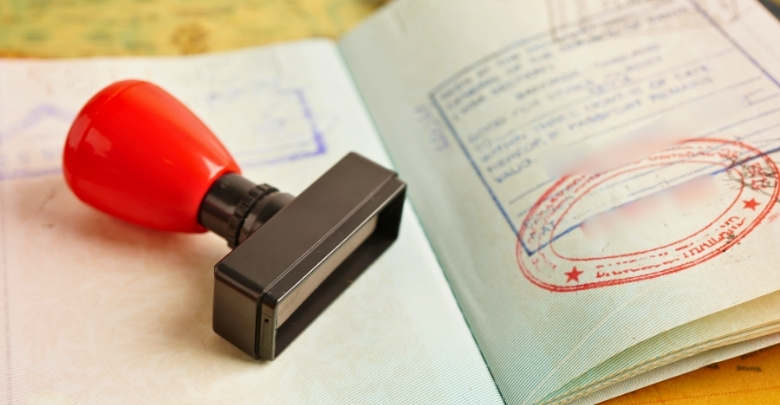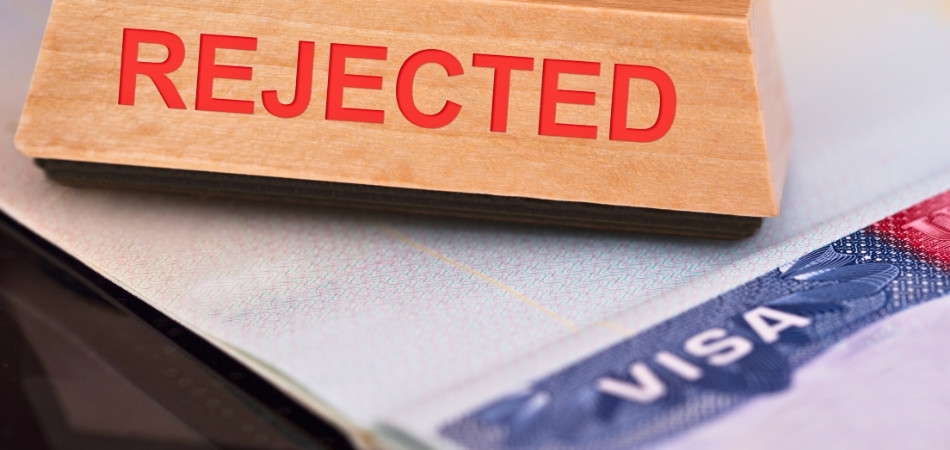Applying for a Canadian visa can be an exciting step for Filipinos planning to study, work, or attend events in Canada. However, the process can also be challenging, as even minor errors or missing documents can lead to rejection. Knowing the key factors that immigration officers consider is crucial to improving your chances of success. This brings us to an important topic: Common reasons for Canadian visa rejection from the Philippines.
The most significant factors include insufficient documentation, unclear travel purposes, financial instability, and previous immigration history. Applicants often overlook the need for thorough applications, leading to missed approval opportunities. Immigration officials prioritize applications that clearly outline the reason for travel and demonstrate the applicant’s ability to support themselves financially during their stay.
Are you curious about how to avoid these pitfalls? In this article, you’ll find detailed information about common reasons for Canadian visa rejection from the Philippines, including tips and strategies to upgrade your application.
What You Need to Know About Canadian Visa Rejections?
Anyone applying to visit, study, or work in Canada should understand Canadian visa rejections. The immigration process can be complex, and many applicants may feel overwhelmed by the requirements. To avoid mistakes and make your application more effective, you should know the common reasons for rejection.
Canadian visa rejections often stem from insufficient documentation, unclear purposes for travel, or financial instability. While there is always a possibility of getting a Canada visa after rejection, immigration officials look for clear evidence that applicants can support themselves during their stay and have a legitimate reason for their visit. Incomplete applications can also lead to quick denials, so thoroughness is essential.
To increase your chances of approval, it is vital to prepare your application carefully. Make sure all forms are filled out correctly, all necessary documents are included, and your travel purpose is clearly defined. Being proactive and informed can help you go through the visa process more successfully and turn your dreams of visiting Canada into reality.
Common Reasons for Canadian Visa Rejection from the Philippines
If you know what to expect, the process of applying for a Canadian visa can be fairly simple. However, many applicants from the Philippines face rejection due to specific reasons. Below are the most common reasons for Canadian visa rejection from the Philippines, explained in detail.
Insufficient Documentation
One of the primary reasons for rejection is failing to provide the necessary documents. Each visa type has its requirements, and it is crucial to review these carefully. Applicants must ensure that all forms are completed accurately and all supporting documents are included. Common documents include proof of identity, financial statements, and travel itineraries.
- Review Requirements: Always check the official website for the latest requirements for your specific visa type. Make a checklist of documents you need to submit.
- Double-Check Applications: Before submitting, review your application thoroughly. Ensure that all questions are answered and no sections are left blank.
- Keep Copies: Make copies of all submitted documents for your records. This can help you in case of any issues later.
Unclear Purpose of Travel
Canadian immigration officials look for a clear purpose for your visit. If your application does not clearly state why you are going to Canada, it can lead to rejection. This is especially true for tourist visas, where the intent to return to the Philippines must be evident.
- State Your Purpose: In your application, clearly state your reason for visiting Canada. Whether it is for tourism, business, or a family visit, make it clear in your documents.
- Provide Supporting Evidence: Include documents that support your purpose, such as hotel bookings, invitation letters, or conference registrations. This adds credibility to your application.
- Explain Your Itinerary: Detail your planned activities in Canada. A well-structured itinerary shows your intent and makes your application more persuasive.
Financial Instability
Immigration authorities want to ensure that you can support yourself during your stay in Canada. If you cannot prove financial stability, your visa may be rejected. This includes showing sufficient funds for travel, accommodation, and daily expenses.
- Provide Bank Statements: Submit recent bank statements that show you have enough funds to cover your trip. Aim to show at least three to six months of financial activity.
- Employment Verification: Include a letter from your employer stating your job title, salary, and employment duration. This can help prove your financial capacity.
- Sponsorship Letters: If someone in Canada is sponsoring your trip, include their financial information and a letter confirming their support.
Incomplete Applications
Submitting an incomplete application is another reason for rejection. If any sections of the application are missing or incorrect, it can lead to a denial. Always ensure that every part of the application is filled out correctly.
- Check for Missing Information: Go through each section of the application to confirm that all required information is included.
- Use the Official Forms: Make sure you are using the correct and most recent forms from the official website. Outdated forms can result in rejection.
- Seek Help If Needed: If you find the application process complicated, consider seeking assistance from professionals or reputable agencies that specialize in immigration services.
Previous Immigration History
Your previous immigration history can impact your current application. If you have had visa refusals in the past, it may raise red flags for the authorities. They may perceive you as a higher risk for overstaying or not adhering to visa conditions.
- Explain Previous Issues: If you have had past refusals, provide an explanation in your application. Address what has changed since your last application.
- Provide Evidence of Compliance: If you have previously traveled to Canada or other countries, include evidence of your compliance with visa conditions during those trips.
- Be Honest About Your History: Always be truthful about your immigration history. Misrepresentation can lead to serious consequences.
Concerns About Intent to Return
Immigration officials need assurance that you will return to the Philippines after your visit. If there is any doubt about your intent to return, your application may be denied.
- Strong Ties to Your Home Country: Demonstrate ties to the Philippines, such as family, property, or employment. This shows that you have reasons to return home.
- Include Return Flight Itinerary: If possible, include a booked return flight as part of your application. This adds credibility to your intention of returning.
- Letter of Commitment: Write a letter explaining your commitment to return to the Philippines after your visit. This personal touch can help reinforce your intent.
Lack of Professional Guidance
Many applicants attempt to deal with the visa process on their own. Without proper guidance, mistakes can easily happen, leading to rejection.
- Consider Professional Help: If you find the process overwhelming, consider hiring a consultant or lawyer who specializes in Canadian immigration. They can help ensure your application is complete.
- Use Resources Wisely: There are many resources available online that provide guidance on the application process. Take advantage of these to stay informed.
- Stay Updated on Policies: Immigration policies can change. Ensure you are aware of any new regulations that could affect your application.
The Importance of a Clear Purpose for Travel
A clear purpose for your visit to Canada is crucial when applying for a visa. Immigration officials look for a specific reason behind your travel plans. This can include tourism, visiting family, and attending international conference in Canada with invitation letter. A well-defined purpose helps convey your intentions to the authorities, making it easier for them to approve your application.
When stating your purpose of travel, be as detailed as possible. Provide information about where you will go, who you will meet, and what activities you plan to do. This clarity shows that you have thought about your trip and are serious about your intentions.
To strengthen this section of your application, consider the following steps:
- Write a Detailed Travel Plan: Outline your travel itinerary in detail. Include dates, destinations, and planned activities. This document serves as a roadmap for your trip and can improve your application.
- Include Supporting Documents: Attach relevant documents that support your purpose. For instance, if you are visiting family, include a letter from your relatives in Canada stating their relationship to you and inviting you to stay with them.
- Explain Why Canada: Briefly state why you chose Canada as your travel destination. Whether it’s for its culture, family, or education, sharing your motivation can help immigration officials understand your intent better.
- Mention Previous Visits: If you have previously traveled to Canada, mention this in your application. Discussing your previous experiences can increase your credibility and support your application.
- Address Potential Concerns: Consider potential concerns immigration officers may have regarding your visit. If you are applying for a work visa, explain how this trip will benefit your career or the company you work for.
The Role of Incomplete Applications in Visa Denials
Incomplete applications are common causes of Canadian visa rejections from the Philippines. Immigration officials receive numerous applications daily, and they prioritize those that meet all the requirements. If your application lacks crucial information, it can lead to delays or outright rejection. Pay attention to every detail when filling out your application. To ensure your application is complete, follow these steps:
Review the Application Checklist
Before starting your application, download the checklist specific to your visa type from the official website. This checklist outlines all required documents and forms. Make sure to cross-check each item as you prepare your submission. A thorough review can save you from making mistakes that could lead to denial.
Complete All Sections
Go through each section of the application form and ensure every question is answered. If a question does not apply to you, indicate this by writing “N/A” instead of leaving it blank. Incomplete sections can raise red flags, so aim for full completion.
Gather Supporting Documents
Ensure you have all the necessary supporting documents. This may include proof of financial stability, travel itineraries, or invitation letters. Refer to your checklist to verify that you are submitting everything required. Missing documents can result in your application being sent back or denied.
Double-Check Your Information
After completing your application, take the time to review all the information you provided. Look for any typographical errors or inconsistencies. Minor mistakes, such as misspelt names or incorrect dates, can lead to complications. Make sure your details match those on your identification documents.
Consult a Professional if Needed
If you find the application process confusing, consider seeking help from a professional immigration consultant or lawyer. They can assist you in ensuring your application is complete and meets all requirements. Investing in professional advice can save you time and increase your chances of approval.
You can significantly reduce the chances of rejection by ensuring your application is complete. To better understand your application, follow the steps to check Canada visa rejection reasons. Immigration officials value thoroughness and attention to detail, and a well-prepared application reflects your commitment to complying with the rules.
What Documentation Is Required for a Canadian Visa?
A successful application depends on knowing what paperwork is needed for a Canadian visa. Each visa category has its own set of requirements, but some documents are commonly needed across most applications. Being organized and preparing the necessary documents can significantly improve your chances of approval.
- Passport: Your passport is the primary document needed for a visa application. It must be valid for at least six months beyond your planned departure date from Canada. Ensure that it has blank pages for visa stamps.
- Visa Application Form: Fill out the appropriate visa application form for your specific visa type. This form requires personal information, travel details, and the purpose of the visit. Be honest and precise when providing information.
- Photographs: Provide recent passport-sized photographs that meet Canadian visa photo requirements. This typically includes specific dimensions and a plain background. Check the official guidelines for the most current requirements.
- Proof of Financial Support: Show evidence of your financial capability to support yourself during your stay in Canada. This may include bank statements, payslips, or sponsorship letters.
- Travel Itinerary: Include a detailed travel itinerary that outlines your planned activities in Canada. This may consist of flight bookings, accommodation reservations, and a list of places you plan to visit.
- Cover Letter: Writing a cover letter can be beneficial. This letter should explain your travel plans, the purpose of the visit, and any other information that might support your application.
- Additional Documents: Depending on your specific situation, you may need to provide additional documents. For instance, if you are visiting family, include an invitation letter from your relatives. If you are attending a conference, provide registration details.
Even though collecting and organizing these documents can seem daunting, they are crucial for visa applications. Make sure to double-check your list before submission. Providing all required documentation will show immigration officials that you are serious about your visit and have planned accordingly.
Common Mistakes to Avoid When Applying
You can save time and stress by avoiding common mistakes when applying for a Canadian visa. Many applicants from the Philippines make simple errors that lead to rejection. You can improve your chances of approval by avoiding these potential failures when preparing your application.
Not Following Instructions
One of the biggest mistakes is failing to follow the application instructions carefully. Each visa type has its guidelines, and not adhering to them can lead to rejection. Always read the instructions provided on the official immigration website before submitting your application.
Providing Inaccurate Information
Inaccurate information can raise red flags for immigration officials. Double-check all personal details, including names, dates, and addresses. Ensure that the information matches your supporting documents. Any discrepancies can lead to complications.
Neglecting to Provide Supporting Documents
One common mistake is not including the required supporting documentation. Always refer to your checklist to ensure that you are submitting all required documentation. Missing documents can lead to delays or rejections, so it’s essential to be thorough.
Ignoring Previous Visa Refusals
If you have had visa refusals in the past, neglecting to mention them can harm your application. Be honest and provide explanations if applicable. Discuss what has changed since your last application, which can help build your case.
Not Preparing for an Interview
Some applicants may be required to attend an interview as part of the visa process. Failing to prepare for this can lead to missed opportunities. Research common interview questions and practice your responses to feel more confident.
Underestimating Financial Evidence
Many applicants do not provide enough evidence of financial support. Make sure to submit bank statements, employment letters, and any other relevant documents. Immigration officials want to see that you can support yourself during your stay.
Ignoring the Importance of a Cover Letter
Some applicants overlook the value of a well-written cover letter. This letter provides an opportunity to explain your purpose for travel in your own words. It can also help clarify any potential concerns the immigration officials may have.
The Importance of a Well-Written Cover Letter
A well-written cover letter is an essential part of your Canadian visa application. It provides a personal touch and helps you explain your purpose for traveling. This letter can also clarify any aspects of your application that might need further explanation.
- State Your Purpose Clearly: In your cover letter, clearly state the purpose of your visit. Whether you are going for tourism, business, or family reasons, make sure to express this clearly. This helps immigration officials understand your intent right away.
- Highlight Key Details: Include key details about your trip, such as the dates of travel, places you plan to visit, and any arrangements you have made. This demonstrates that you have carefully planned your trip and have a clear itinerary.
- Address Potential Concerns: If any aspects of your application could raise concerns, address them in your cover letter. For example, if you have a previous visa denial, briefly explain what has changed since then. This can help mitigate any worries officials may have.
- Express Your Commitment to Return: Reassure immigration officials of your intent to return to the Philippines after your visit. Include information about your ties to your home country, such as family, employment, or property. This can strengthen your application by showing that you have reasons to return.
- Maintain a Professional Tone: While a cover letter should be personal, it should also maintain a professional tone. Use clear and concise language, and avoid overly casual phrases. Proofread your letter to eliminate any grammatical errors or typos.
A well-written cover letter can significantly strengthen your Canadian visa application. It provides an opportunity to present your case directly to immigration officials and can help clarify your intentions for travel.
How to Strengthen Your Visa Application?
To improve your chances of getting approved, you must make your visa application stronger. The immigration process can be competitive, and presenting a complete and compelling application can set you apart from others. Here are some effective strategies to reinforce your application.
Ensuring Complete Documentation
First, ensure that you have all the required documentation. A complete application is critical for a successful outcome. Review the official requirements for your specific visa type and create a checklist of all necessary documents. Include your passport, application forms, photographs, and supporting evidence. Double-check each document for accuracy and completeness. Missing or incorrect information can lead to immediate rejection, so take the time to gather everything you need.
Articulating Your Purpose for Travel
Clearly articulate your purpose for travel. Immigration officials want to know why you are visiting Canada. In your application, provide a detailed explanation of your travel plans, including where you will stay, what you will do, and whom you will visit. A well-structured travel itinerary can help convey your intentions. If you are visiting family, include a letter of invitation from your relatives. This adds credibility and shows your connection to Canada.
Demonstrating Financial Stability
Another crucial aspect is demonstrating financial stability. Immigration authorities need to be assured that you can support yourself during your stay. Provide recent bank statements, employment letters, and any additional financial documentation. This evidence shows you have the means to cover your travel expenses and stay in Canada without financial strain.
Writing a Cover Letter
Additionally, you should consider writing a cover letter. This letter should summarize your application and explain your purpose for travel. Use this opportunity to address any potential concerns or questions immigration officials may have. A cover letter adds a personal touch and allows you to present your case more effectively.
Being Honest and Transparent
Be honest and transparent throughout your application. If you have had previous visa denials, address these openly and explain what has changed since then. Honesty builds trust and increases your chances of approval.
Frequently Asked Questions (FAQs)
It can be challenging to get through the Canadian visa application process. Below are some frequently asked questions that provide clarity on common concerns and help you prepare your application more effectively.
How Can I Prove My Financial Stability for a Canadian Visa?
To prove financial stability for a Canadian visa, applicants should provide recent bank statements, employment letters, and evidence of any assets or savings. This documentation should demonstrate sufficient funds to support themselves during their stay. Sponsorship letters can also show financial support from family or friends in Canada.
Do I Need a Cover Letter for My Canadian Visa Application?
While a cover letter is not always required, it is highly recommended. A well-written cover letter allows you to clearly explain the purpose of your visit and address any potential concerns. It can help immigration officials understand your intentions and improve your overall application.
What Should I Include in My Travel Itinerary?
Your travel itinerary should include details about your travel dates, destinations, accommodations, and planned activities. Make sure to outline how you will spend your time in Canada, whether visiting attractions, attending events, or meeting family. A clear itinerary demonstrates thoughtful planning and helps convey your purpose for travel.
Can Previous Visa Refusals Affect My Application?
Yes, previous visa refusals can affect your current application. Immigration officials may view past refusals as a sign of potential non-compliance. However, providing explanations and evidence of changed circumstances can help mitigate concerns. Being honest about your history and addressing any issues can improve your chances of approval.
Final Words
Visa applications can be challenging, especially if the possibility of rejection looms over your head. To be successful, an applicant must understand the complexity of the application process and be aware of common mistakes. You can make a huge difference by taking the time to prepare thoroughly.
The common reasons for Canadian visa rejection from the Philippines typically include insufficient documentation, unclear purposes for travel, and financial instability. Each of these factors can lead to quick denials if not addressed properly. By knowing these reasons, you can strengthen your application and increase your chances of approval.
As you prepare for your application, remember to gather all necessary documents and clarify your travel intentions. Be honest about your financial situation and ensure your application is complete. Best wishes on your journey, and may your efforts lead to a successful visa approval!









